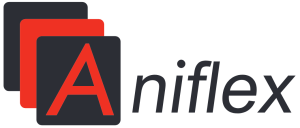Every day, around the world, both companies and private individuals come accross all kinds of self-adhesive labels. The abundance of available raw materials for the manufacture of labels makes it possible to select the appropriate material for each type of product. It is necessary to pay attention to the need for materials with specific characteristics for particular industries operating on the market. One example is the food industry, which, through strict legal standards, requires the paints, varnishes or adhesives used to have a low level of migration.
The most common technologies used for label printing are digital, flexographic or hybrid printing, which makes it possible to choose the appropriate form of printing depending on the type of labels, volume of print, or decoration used.
Among the available types of self-adhesive labels, there are several which, in addition to their basic function of informing the customer about the product’s properties, have additional functions. They include:
– peel-off labels, used when more information is needed on the label and standard one-sided printing makes this impossible;
– fragrance labels, found mainly in the cosmetics industry;
– Braille labels, used in the pharmaceutical and cosmetic industries to mark products that require effective identification by the blind or visually impaired;
– protective labels, used by pharmaceutical companies and electronics manufacturers;
– structural labels, used largely to emphasise the aesthetic qualities of the product; texture labels give a more prestigious appearance;
Labelling does not only involve providing the necessary information about the product itself. It also plays an important role in the company’s promotional activities and thus forms an important part of the manufacturers’ marketing campaigns. By recognising the packaging label, the consumer often spots the product on the store shelf from a distance.
What are the elements of the self-adhesive label?
The most common self-adhesive label design consists of three layers: the primer, the adhesive and the top coat. Currently, in each of these areas, standard materials and a group of pro-environmental materials with a lower environmental impact can be distinguished.
Among foil labels, polypropylene film and polyethylene film are most commonly used, but recently, label material manufacturers have also focused on providing an eco-friendly alternative. This led, among other things, to the development of a 100% wood-based bio-Verno naphtha film, or a polyethylene film composed of 80% plant-based renewable raw materials. In times of the widespread pro-environmental trend, the possibility of using labels with a lower environmental impact has given manufacturers the opportunity to take measures to improve the state of the environment. It is also increasingly common to find products made from renewable raw materials in the top coat.
The second component of the label is the adhesive layer. It is worth noting that among the most commonly used adhesives one can distinguish substances produced on the basis of acrylic material or rubber. At this point, it should be mentioned that the adhesives introduced on the market are characterised by a high level of “washability”, thanks to which they support recycling processes.
The last layer is the primer where, in addition to standard materials, intermediate materials with an admixture of recycled raw materials or the so-called reduced materials can be found.
Tailor-made offer
If you are looking for a high-quality product, choose our offer. We are a printing house which has been successfully operating in the self-adhesive labels market for many years. Thanks to the wide range of available materials and technological facilities, we offer labels that are resistant to weather conditions, water, UV rays or the influence of time, while maintaining their original appearance.
Due to our many years of experience in digital printing, screen printing and flexographic printing, we are able to produce even the most complex self-adhesive label designs.

